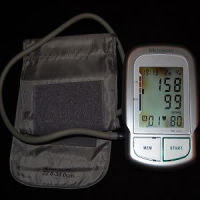Researchers at Toronto Rehab have discovered a new approach to determine which patient populations benefit most from cardiac rehabilitation. The study is published in the Journal of Clinical Epidemiology,.
During the study, the researchers found that frail, older adults with multiple illnesses and higher baseline risk factors including hypertension and diabetes benefit most from cardiac rehab as compared to women who live alone, are socio-economically disadvantaged, socially deprived, and have greater levels of BMI.
The study reveals that individual baseline risk at the time of entry into cardiac rehab such as age, sex, socioeconomic status and clinical risk factors have the strongest impact on the success of the programme.
The study was led by Dr. David Alter, Senior Scientist, Toronto Rehabilitation Institute-University Health Network (UHN) and examined the behavioural tendencies of the population, including their risk of dropping out of the program. No study previously has demonstrated the impact of juxtaposing risk of programme dropout versus risk of dying and of determining who benefits more from cardiac rehab and which patient populations require more support.
Approximately 16,000 cardiac rehab patients at Toronto Rehab's Cardiac Prevention and Rehabilitation Program at Rumsey Centre were included in this study. Participants were admitted to the programme a minimum of four to eight weeks after a cardiovascular event or surgical intervention. They were expected to attend a weekly exercise session, one-on-one counseling, education and peer-to-peer support once per week for six months.
Findings showed that the elderly, frailer population experienced greater benefits with even the smallest lifesytel changes and modifications to lifestyle. However, women who were socioeconomically disadvantaged and socially isolated struggled to attend the programmes for a variety of reasons such as work commitments, inability to afford transportation,, dependence on others etc. The findings thus show a gap in care and highlight an unmet delivery need.
"Across Canada, we operate on this 'one size fits all approach' to cardiac rehab – but this study suggests that we may have it wrong. We need to tailor cardiac rehab services to the behaviours and profiles of the patient populations we serve to have a stronger impact on the number of lives saved."
"We are now in a better position to inform policy makers on the most effective ways to allocate resources and funding to cardiac rehab programs – we need to ensure that our programs work for the most number of people to have the largest impact," says Avi Biswas, lead author and PhD candidate, Toronto Rehabilitation Institute-UHN.
Source: Journal of Clinical Epidemiology
Image Credit: Wikimedia Commons



























